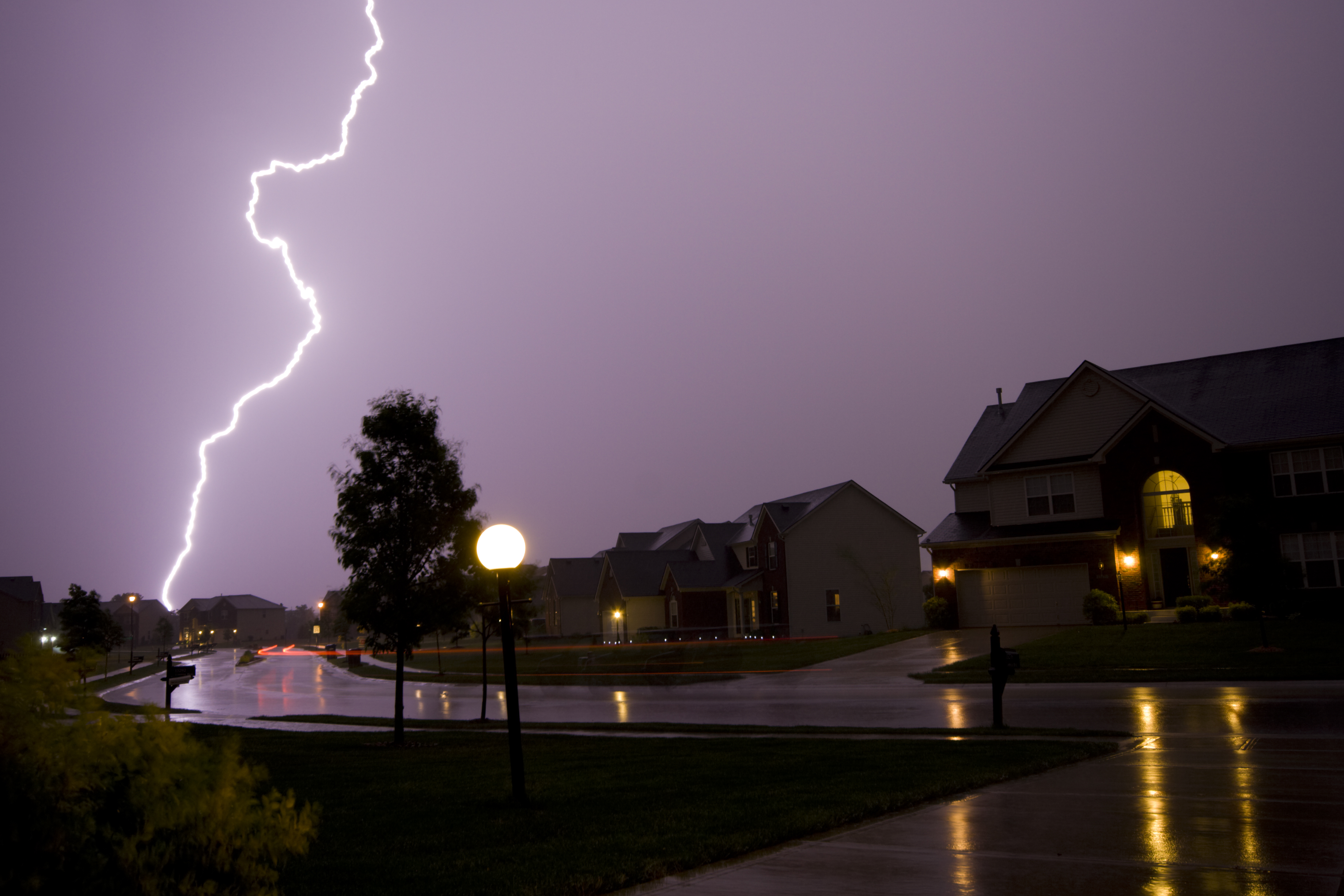Have you ever had to leave a pool due to a decline in the weather? In my many years working at public pools I had many occasions where we closed due to inclement weather. This may not sound surprising, but what did surprise me was the number of people who did not understand why the pool had to be closed. Always make sure you listen to your lifeguard when giving directions.
Thunder and Lightening
A general rule when it comes to thunder is, if you can hear it you can be struck by lightning. If you see lightning, evacuate the pool and seek shelter immediately. One method of determining how close a storm is would be to count the number of seconds between the visualization of the lightning and the sound of the thunder. For every 5 seconds that passes, the strike was a mile away. For example if you counted 15 seconds in between, the lighting strike was only 3 miles away. If you cannot see the lighting it is still always best to leave the water when thunder is present due to the fact that multiple lightning strikes can be miles apart.
When Can you Swim Again?
A good rule to follow for returning to the water is to wait 30 minutes from the last thunder heard or 60 minutes from the last lightning seen. This may seem excessive, but it is best to air on the side of safety when it comes to electrocution. In addition to these guidelines, I also recommend keeping up to date with the weather when planning water activities of any kind.
Strong Winds
Strong winds can cause debris to be scattered around the pool or in the water posing a threat to safety. Storms can also have a lasting effect on oceans creating dangerous currents and large waves days before or after a storm has passed.
Sunny and Bright
Surprisingly, many hazards occur on the most beautiful sunny days. Some of the risks of sun exposure include burns, dehydration, and heat stroke. Sunburns can be very painful and often result in permanent damage to the skin.
Using sunscreen and taking breaks in the shade can reduce this risk dramatically. Dehydration is very common in the summer heat; limiting salt intake and keeping hydrated with water and electrolytes can help prevent this. Heat stroke often begins with sweating and headaches, and may progress to vomiting, chills, dizziness, and even hallucinations. Heat stroke occurs when the body is no longer able to cool itself down, and is a medical emergency and should not be taken lightly; get medical attention at the first sign of a heat related injury.
About the author:Megan Rotatori is a Sunsational Swim School instructor from Medway, MA
Megan Rotatori is a senior nursing student at the University of Vermont. She has been a swim instructor for seven years and a lifeguard for four. Megan grew up involved in competitive swimming, and always had a great love for the pool and the ocean. She is passionate about working with kids, and specializes in working with children with disabilities and special needs.
Book your lesson with Megan, or another Sunsational Swim School instructor today!
ABOUT SUNSATIONAL SWIM SCHOOL
Sunsational Swim School is the 🥇 #1 rated provider of private, at-home swimming lessons in America. We have specialized swim instructors for students ages 6 months to adult, beginner to advanced. Featured on ABC, CBS, Impact 100, The List and others, Sunsational instructors have a minimum of 2 years of teaching experience, are CPR certified and insured, and have collectively taught over 302,223 lessons for more than 74,415 students nationwide!


